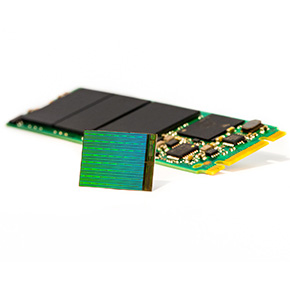Those who have kept an eye on the SSD market over the past 12 months will have noticed a rise in prices due to NAND flash shortages. NAND flash memory is the technology behind power-efficient, solid state drives (SSDs) and other storage memory found in personal computers and mobile devices.
This shortage is impacting those of us in the electronics industry in a variety of ways. Not only are prices rising, but more companies are now trying to fill the void by producing more SSD, while others are hard at work to create alternatives.
The shortage we are experiencing is due to several factors, including:
- A difficult transition from 2D to denser 3D technology on the manufacturing side
- Continued high demand for flash for use in smartphones, in particular, the increased storage offered by iPhone 7s
- Heightened demand from manufacturers desiring flash storage for datacenter hardware
- Sustained demand for PCs and notebooks, with average flash adoption in notebooks expected to exceed 30%
- Troubles on the manufacturing side by the two of the largest producers
That final point merits a few more words. One of the largest factors that is undoubtedly contributing to the NAND shortage is Toshiba’s current financial troubles. The second largest supplier of flash memory in the global market and first company to begin producing NAND flash memory, Toshiba has struggled with the production of 3D NAND memory. Toshiba’s troubles are not, however, completely on the manufacturing side. The electronics giant recently acquired a company to build nuclear power plants in the United States—a woeful project that has resulted in accounting scandals, legal actions, and billions of dollars in debt. The upshot: Toshiba is now selling off its semiconductor/NAND memory division. We assume that bidders will include Micron Technology, SK Hynix, Broadcom Ltd, and Western Digital.
Another, more highly publicized issue has to do with the largest supplier of flash memory in the global market: Samsung. The recall of Samsung’s Galaxy Note 7 smartphones a few months ago have been a factor in the global scarcity, as scores of devices had to be returned and replaced in the market. Along with each of those returned devices was a flash memory unit taken off the market (at least temporarily).
The net effect of this shortage is that prices have increased to PC manufacturers. As SSD performance is now reaching mainstream consumer awareness, including these drives in personal laptops is becoming more and more expected. Nevertheless, SSDs are not usually within the same capacity that most standard hard disk drives (HDD) are sold with. Laptops sold with SSDs are typically in the range of 128 to 256 GB, while a laptop with an HDD is commonly much higher–anywhere between 500GB to 1 TB. But the price differential tends to be quite significant. That will likely remain consistent while scarcity exists.
Nevertheless, some manufacturers are optimistic. Samsung is now expected to begin operating a new plant in Pyeongtaek in July to further expand its 3D NAND production capacity. Micron will start producing 64-layer 3D NAND chips in the second quarter, with mass shipments becoming ready for the second half of the year. The company promises “meaningful output” by the end of their fiscal year in December.
We won’t hold our breath, but while manufacturers continue to scramble, and alternative storage technologies emerge, we’ll keep you updated. Keep your eye on this blog for further developments.


Recent Comments